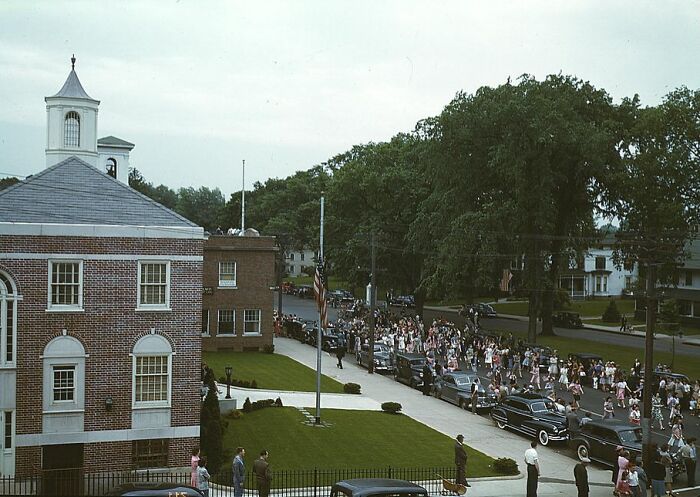[ad_1]
Black-and-white photos have their own nostalgic charm, but sometimes they can feel a little distant, like glimpses of a world we can’t quite connect with. Now, imagine seeing those same vintage moments in full color—suddenly, history feels more real, almost like stepping into a time machine!
The Bored Panda team has scoured the internet to find some of the most stunning colorized photos from the 1940s. These beautiful images breathe new life into the past, turning historical moments into something more vivid and relatable. Keep scrolling to see history like you’ve never seen it before!
Many of us love using black-and-white filters on our photos today, but back in the day, that was the only option! Imagine a world where every photo was captured in shades of gray, with no way to preserve the vibrant colors of life.
It wasn’t until much later that color photography became a reality, completely transforming the way we see history.
Before color photography could exist, scientists had to first understand how light and color actually work. The journey began in the 17th century when Sir Isaac Newton used a prism to split sunlight, revealing that it was made up of seven colors.
This discovery laid the foundation for understanding how we perceive color and how it could eventually be recreated in images.
Fast forward nearly 200 years to 1861, when Scottish physicist James Clerk Maxwell demonstrated how color could be produced. He discovered that every color could be created by mixing different amounts of red, green, and blue light.
This experiment was groundbreaking and set the stage for future advancements in color photography.
To prove his theory, Maxwell photographed a tartan ribbon three times using red, green, and blue filters. He then projected the three images together using matching colored lights, and when they overlapped, a full-color image appeared. This was the first-ever color photograph, marking a huge leap in photography history!
While Maxwell’s theory was revolutionary, a practical way to capture and print color photos was still missing. Soon after, French physicist Louis Ducos du Hauron developed a method using colored pigments instead of light.
He took three black-and-white photos through red, green, and blue filters, then combined them with corresponding dyes to produce a color image. This technique eventually evolved into the modern color photography process we use today.
Narendra Singh, whose great-grandfather was a photographer in the black-and-white era, recalls stories passed down in his family. “I remember my father telling me about how long exposure times were and how film couldn’t capture the full range of colors,” he shared with Bored Panda. “It took so much effort to get a single good shot.”
He further added, “Developing a photo back then was a long and delicate process. Compared to today, where we can snap a picture instantly and print it in seconds, it’s almost unbelievable how far photography has come.”
He also reflected on how amazed photographers from the past would be if they saw modern cameras and smartphones. “They would be shocked at how easy it is now—imagine telling them that we carry high-quality cameras in our pockets and can edit photos with a tap on a screen!”
Looking at these colorized historical photos really puts things into perspective. They bring history to life in a way that black-and-white images never could. Which one of these photos stood out to you the most? Let us know in the comments!
The Memorial Day Parade Moving Down The Main Street. The Small Number Of Spectators Is Accounted For By The Fact That The Town’s War Factories Did Not Close. The Town Hall Is In The Left Foreground. May 23 To May 30, 1942 May.
[ad_2]
Source link



